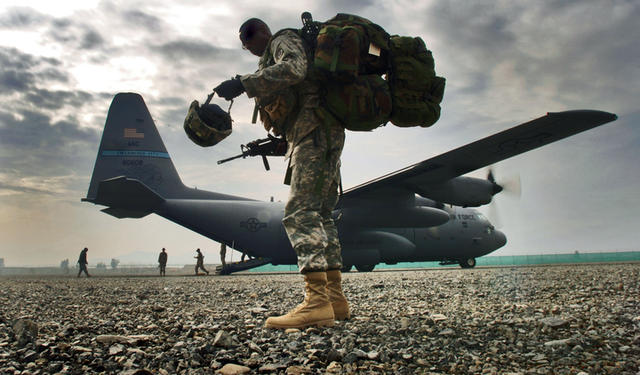 Just over half the attacks on US mobility aircraft were by small arms fire, with most of the rest being rocket or rocket-propelled grenade attacks, said Gen. Duncan McNabb, Air Mobility Command boss. Only a few were Stinger-type missile attacks. The favored target, probably because of its commonality in the war zones, was the C-130, which terrorists took aim at 165 times. The second most-popular terrorist target among the mobility aircraft was the C-17, targeted 25 times. These numbers illustrate the fact that current-day mobility missions are combat sorties, said McNabb. Theater direct delivery and missions to take Army convoys off the roads of Iraq mean that AMC’s forces regularly take off and land in insecure areas. In “some of these places,” that the Air Force operates McNabb said, the terrorists would “like nothing better” than to shoot down one of AMC’s aircraft.
Just over half the attacks on US mobility aircraft were by small arms fire, with most of the rest being rocket or rocket-propelled grenade attacks, said Gen. Duncan McNabb, Air Mobility Command boss. Only a few were Stinger-type missile attacks. The favored target, probably because of its commonality in the war zones, was the C-130, which terrorists took aim at 165 times. The second most-popular terrorist target among the mobility aircraft was the C-17, targeted 25 times. These numbers illustrate the fact that current-day mobility missions are combat sorties, said McNabb. Theater direct delivery and missions to take Army convoys off the roads of Iraq mean that AMC’s forces regularly take off and land in insecure areas. In “some of these places,” that the Air Force operates McNabb said, the terrorists would “like nothing better” than to shoot down one of AMC’s aircraft.
House, Senate Unveil Competing Proposals for 2026 Budget
July 11, 2025
Lawmakers from the House and Senate laid out competing versions of the annual defense policy bill on July 11, with vastly different potential outcomes for some of the Air Force’s most embattled programs.